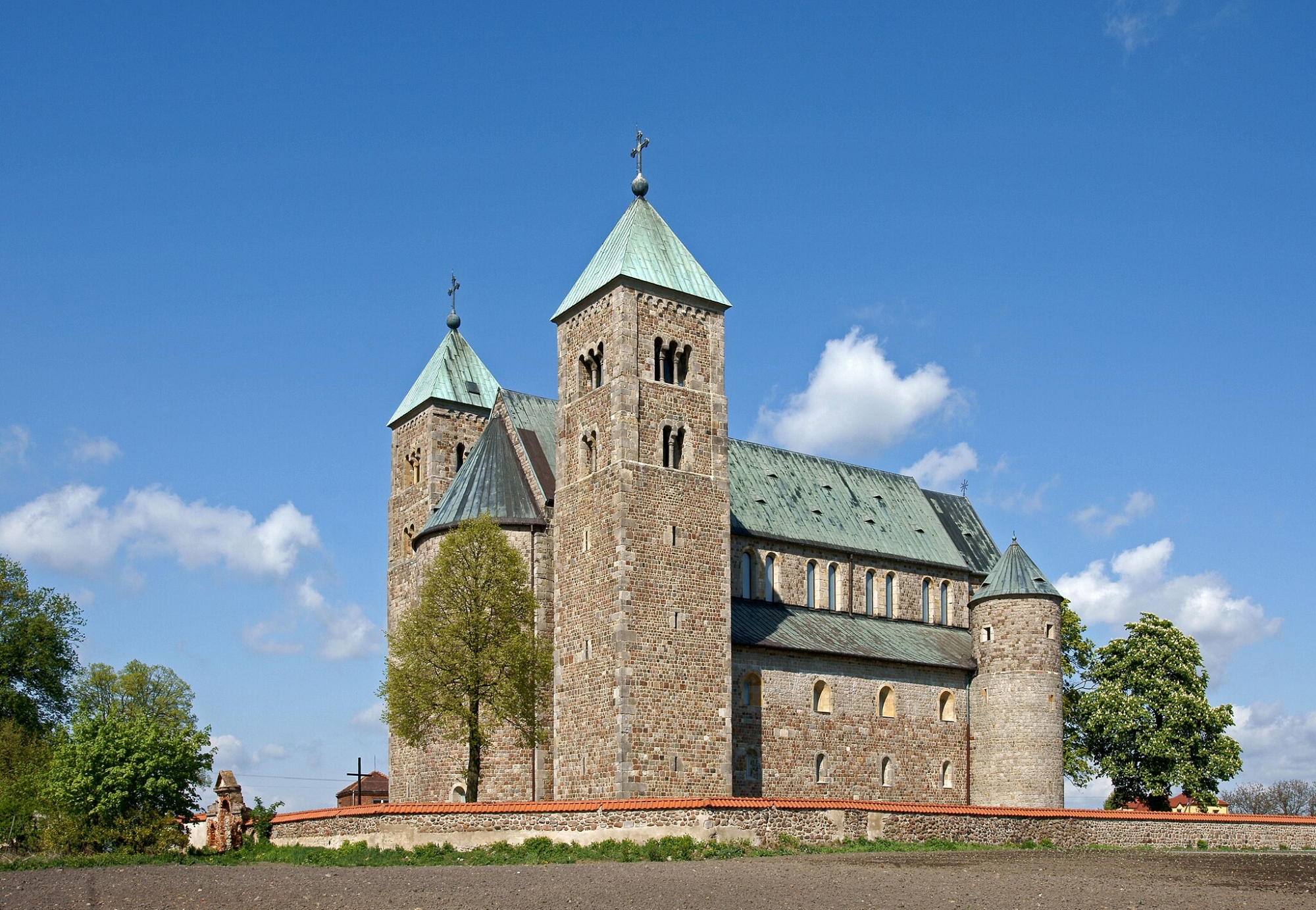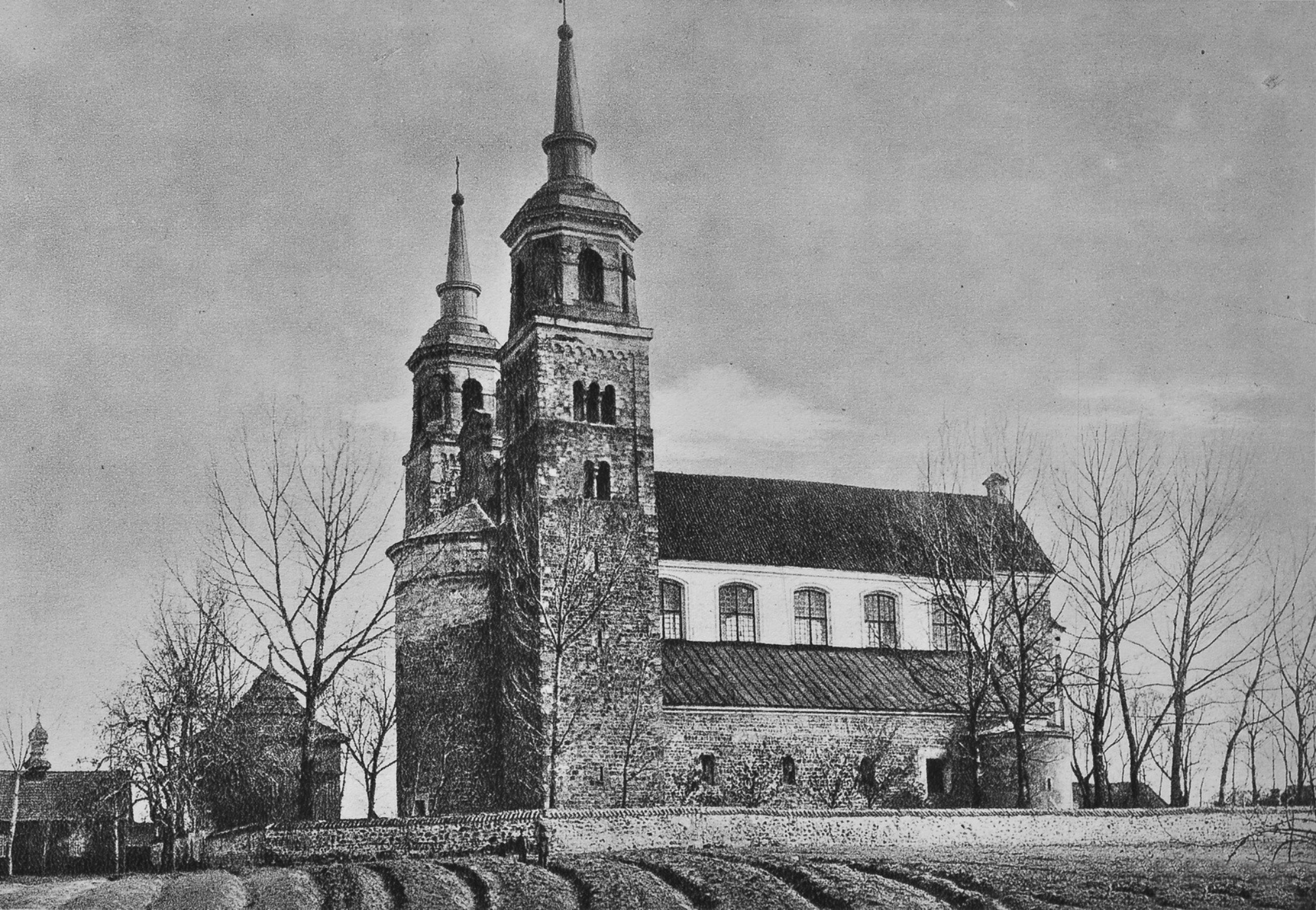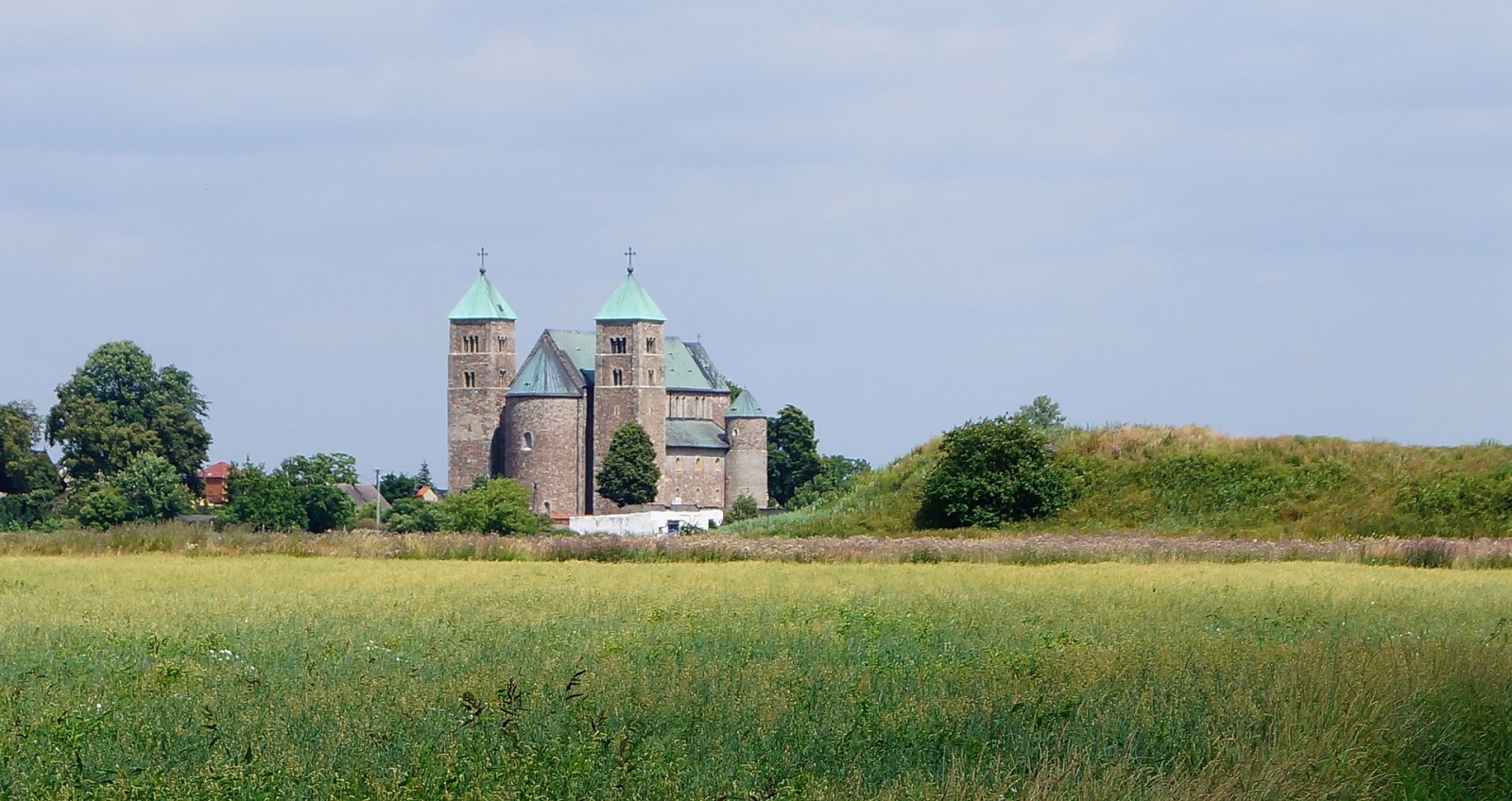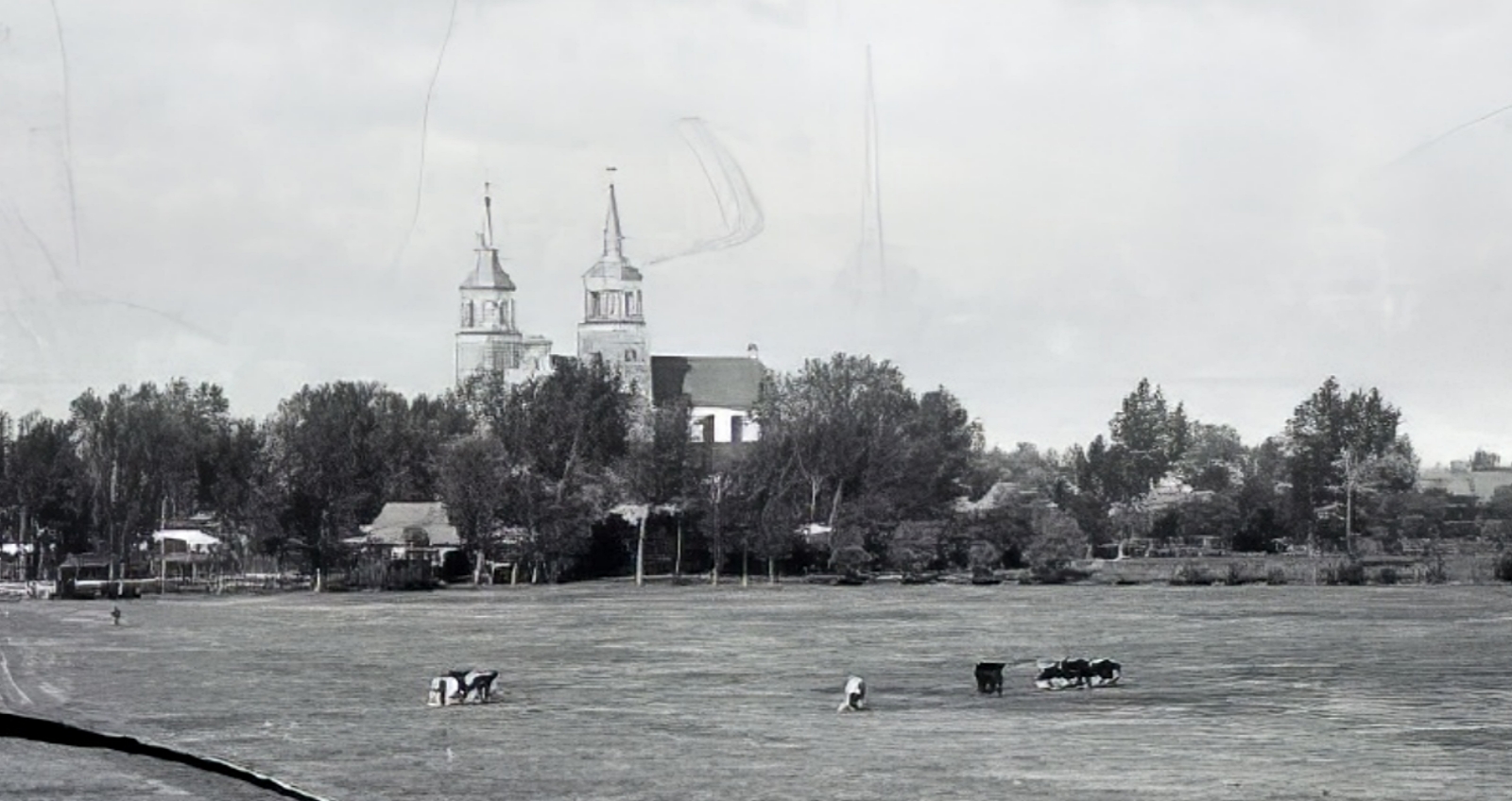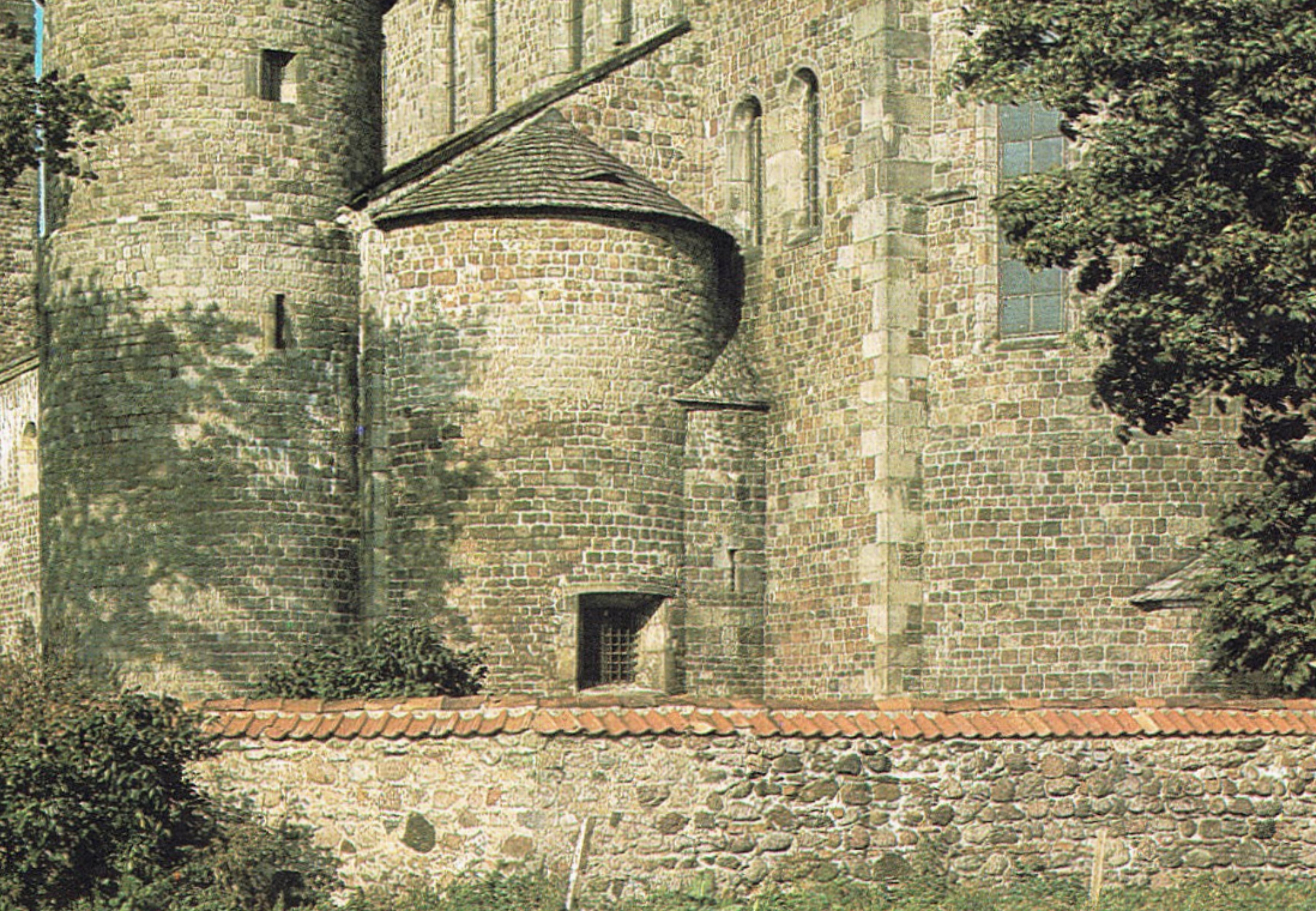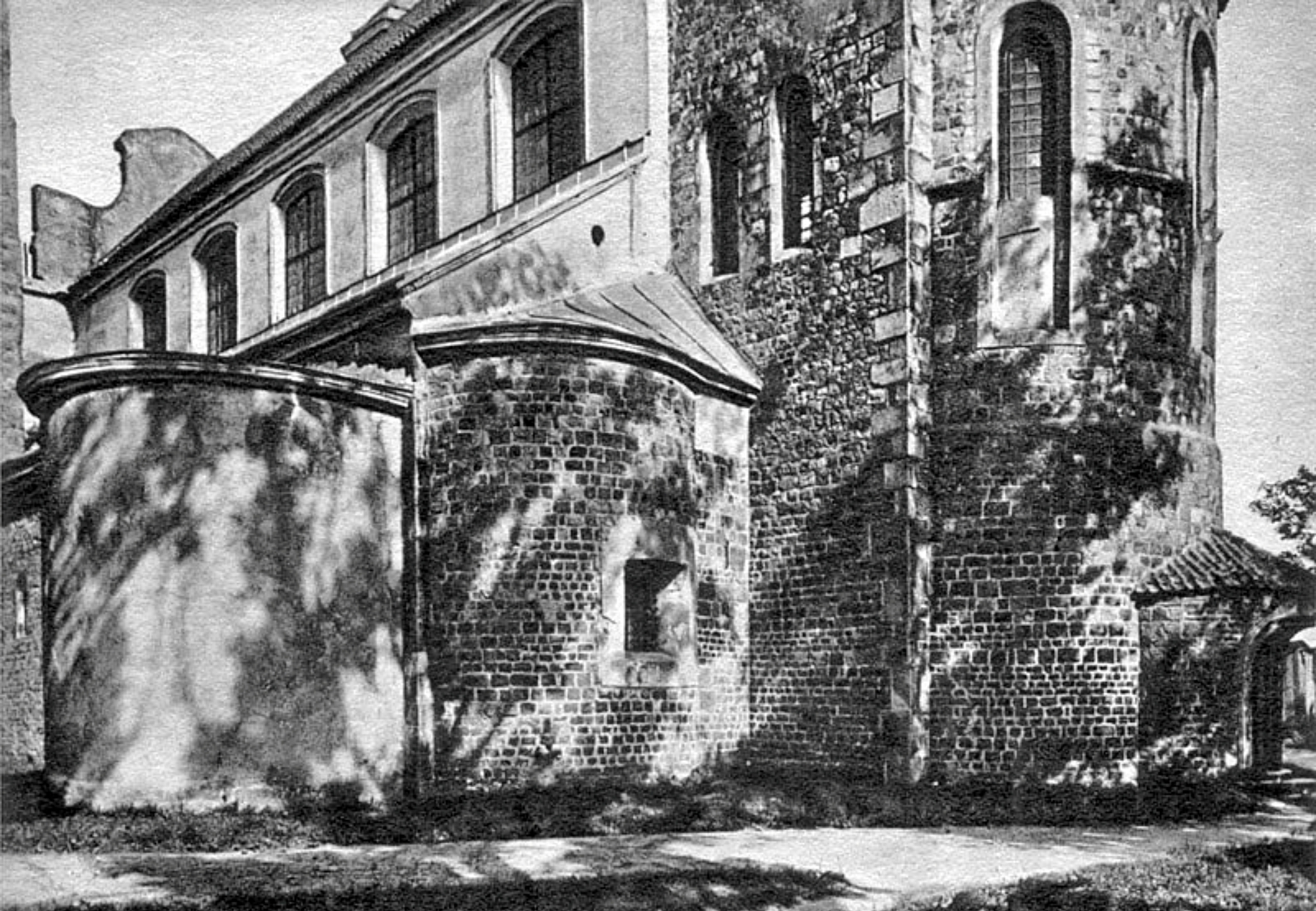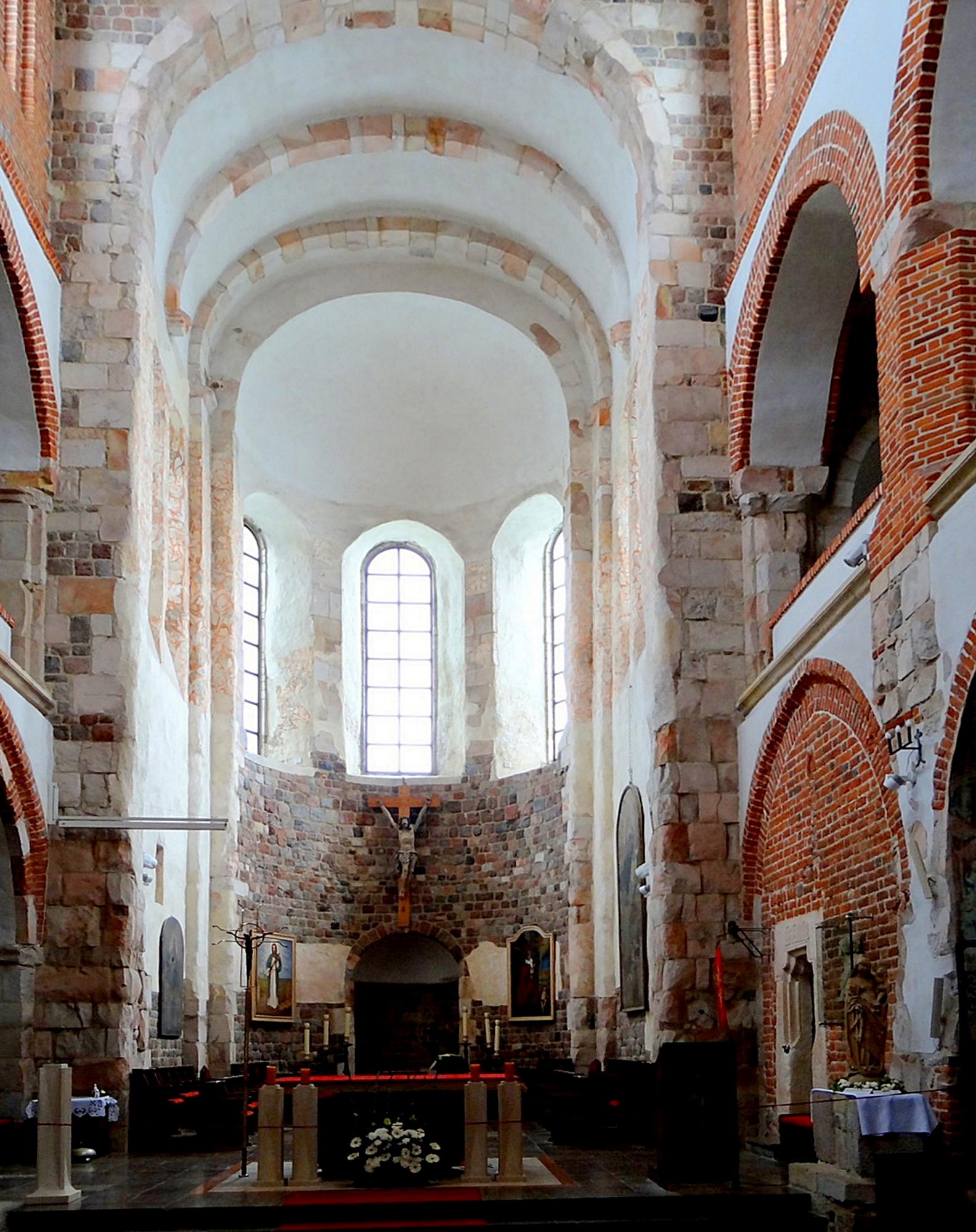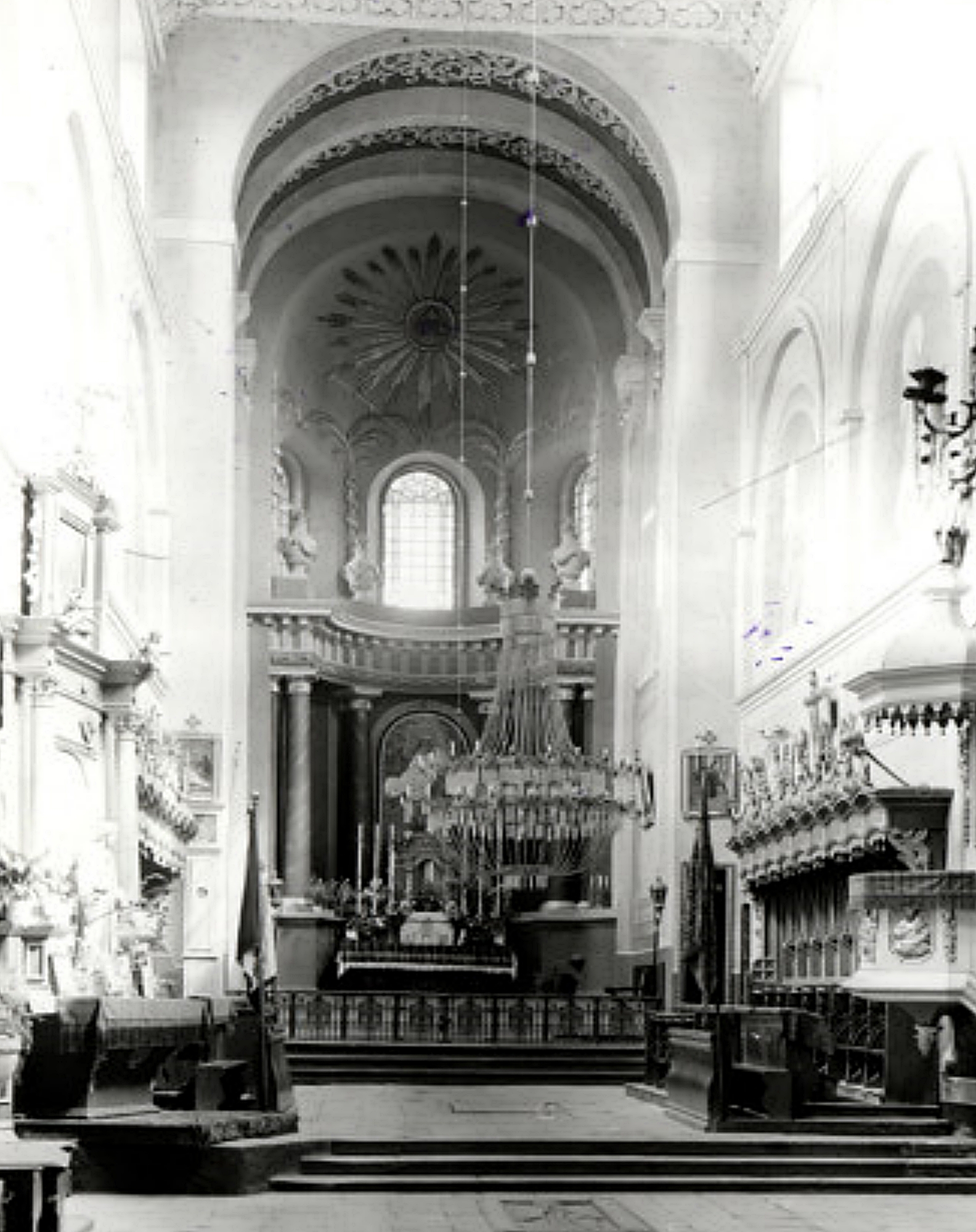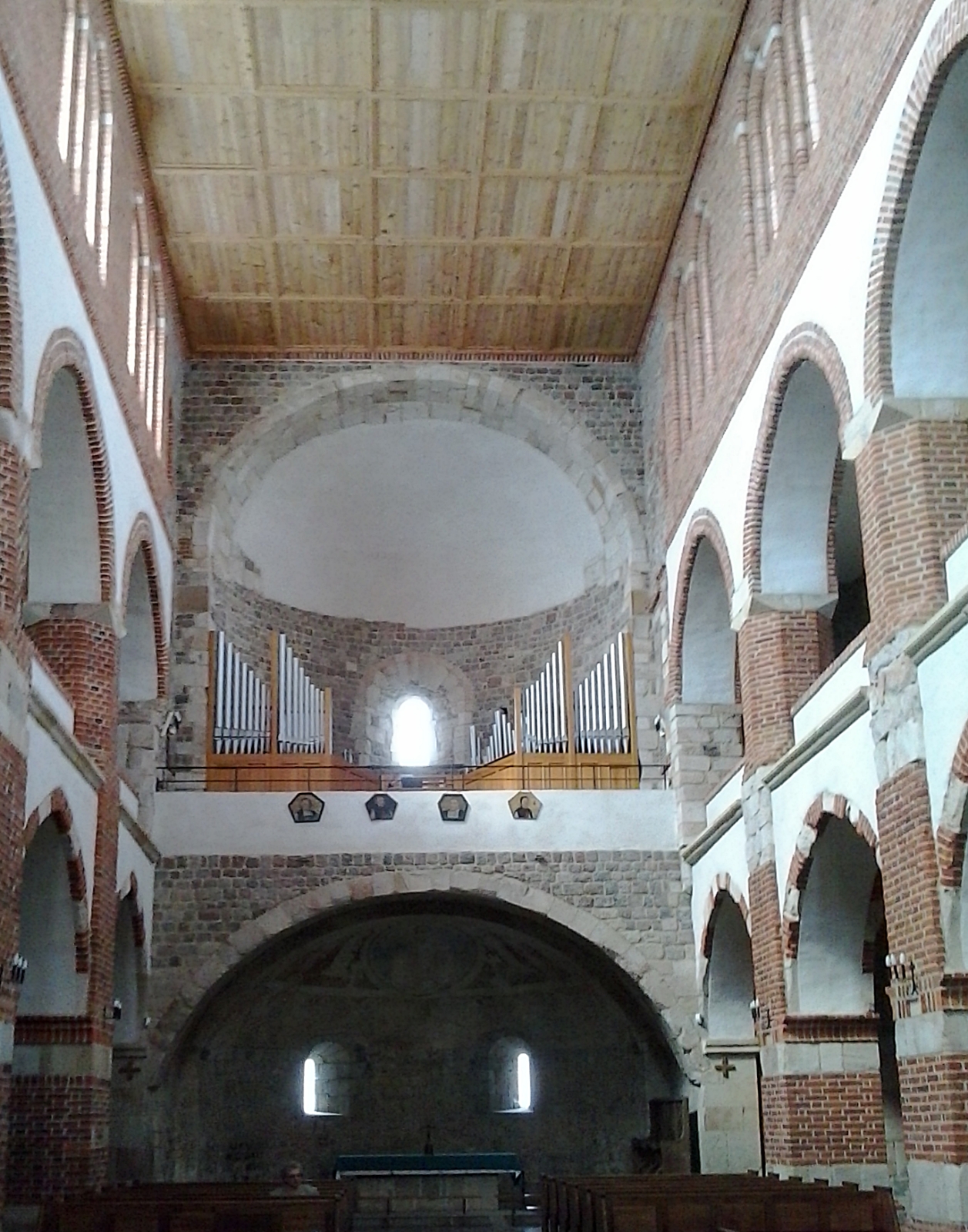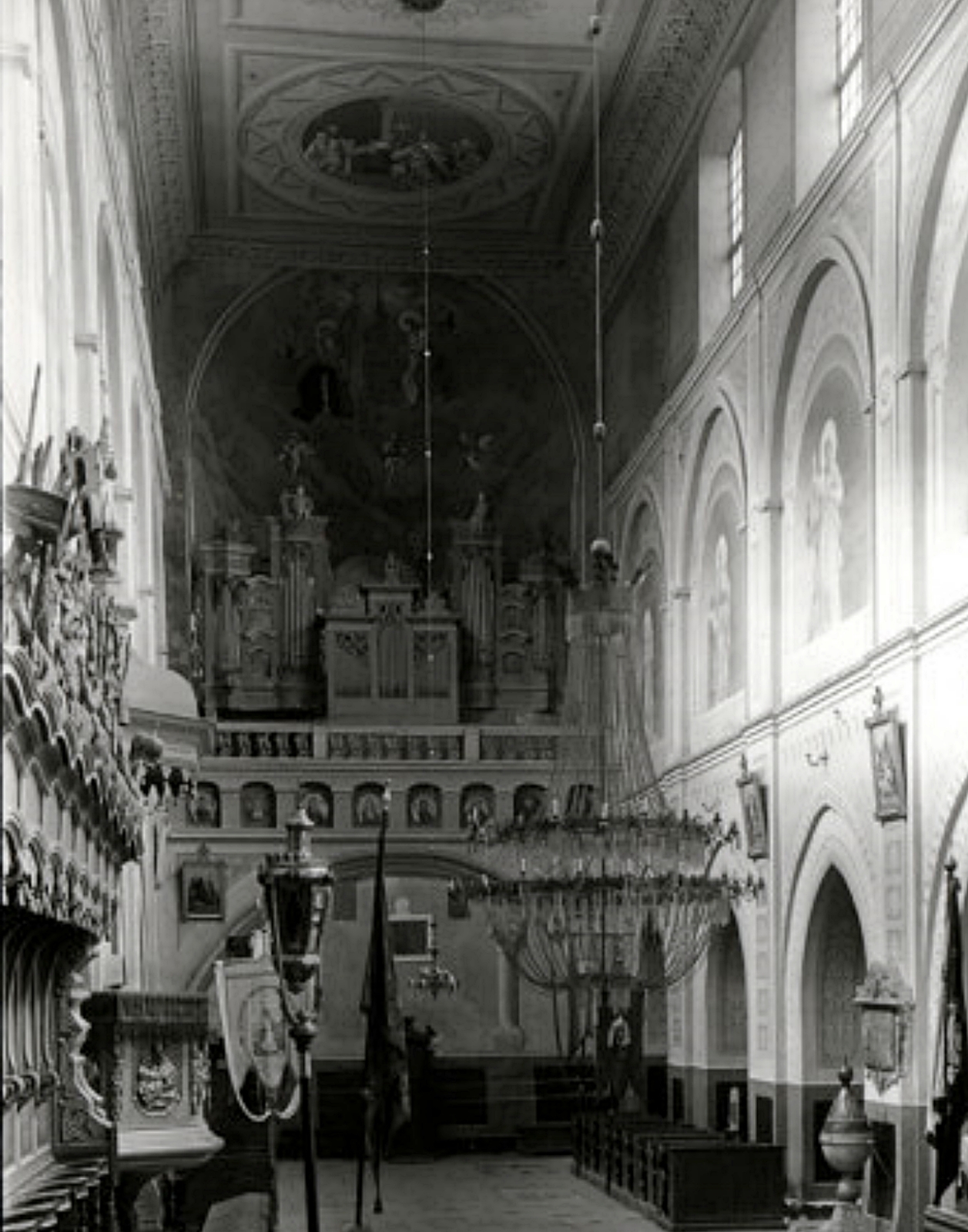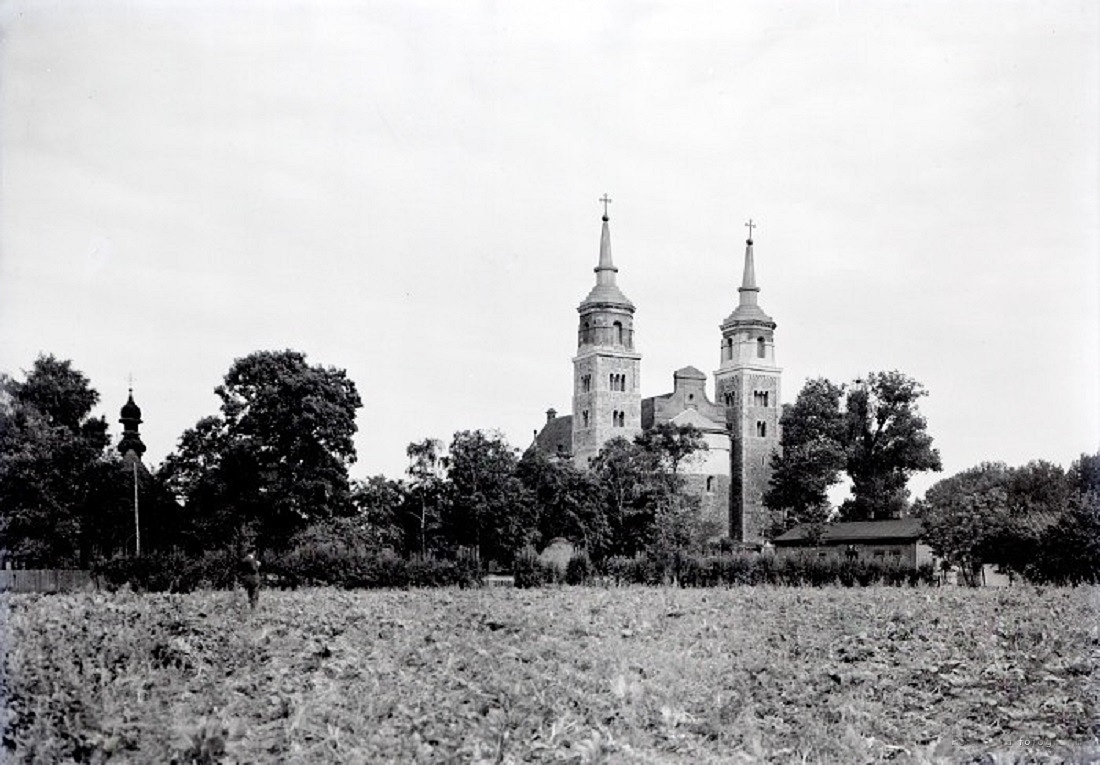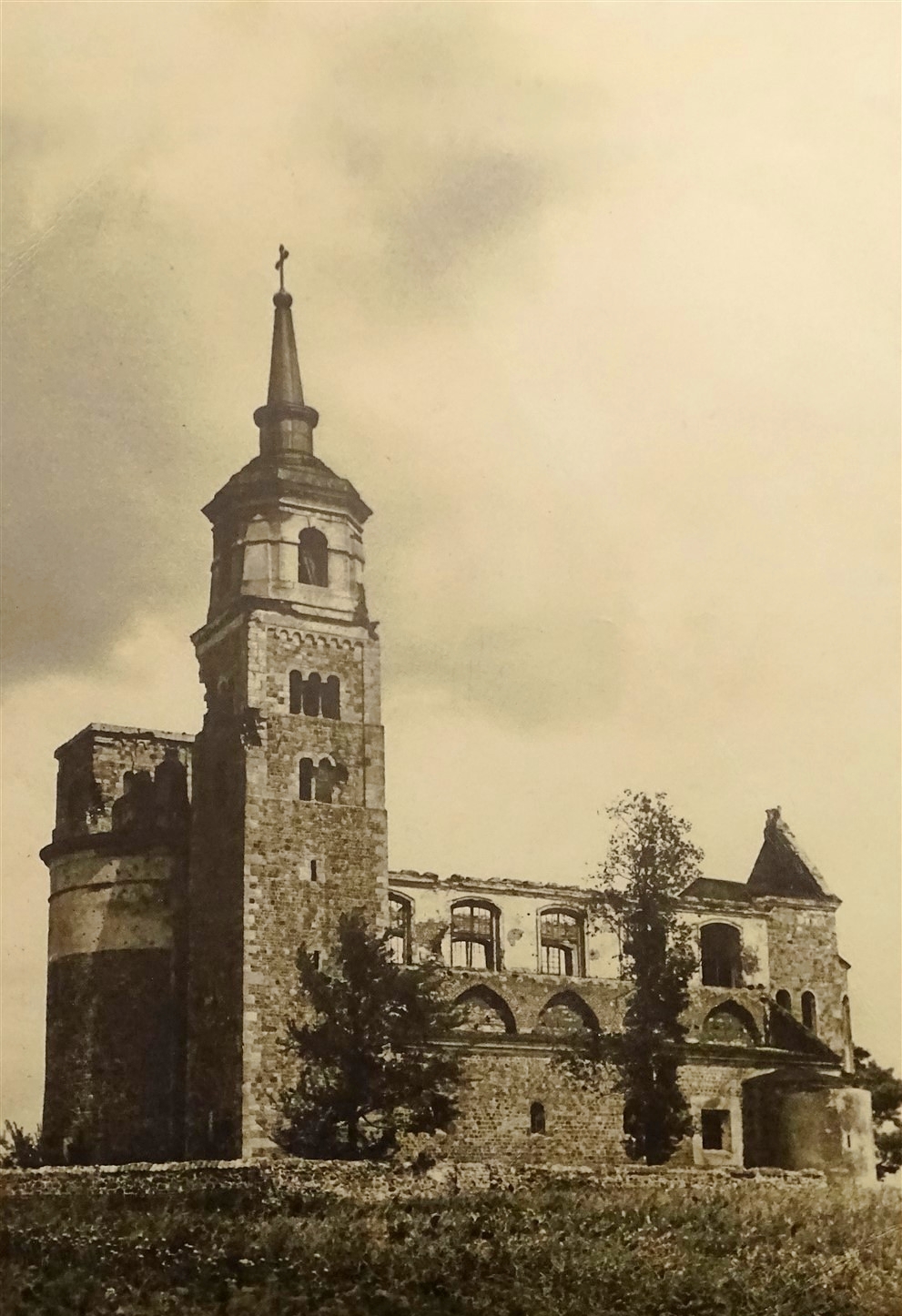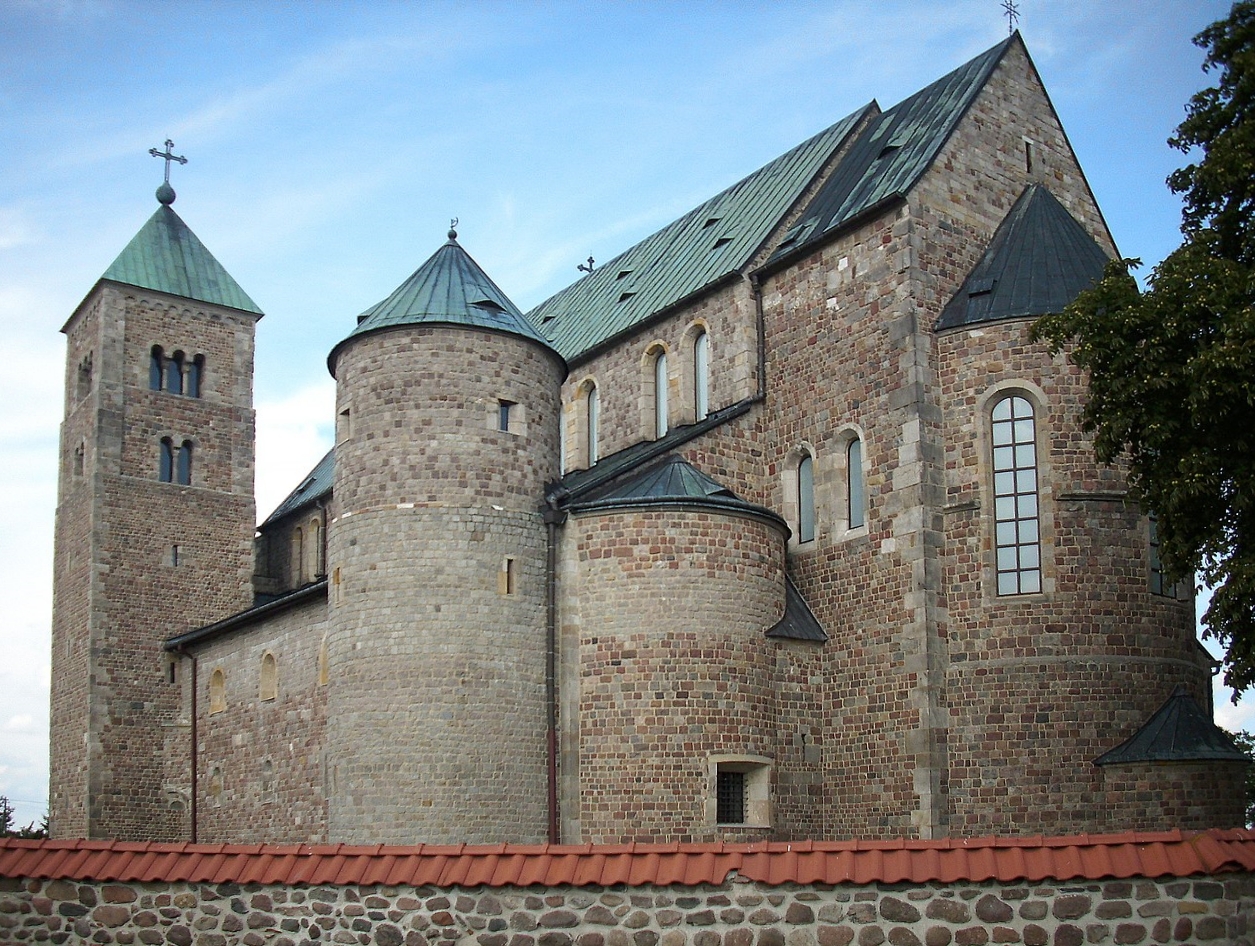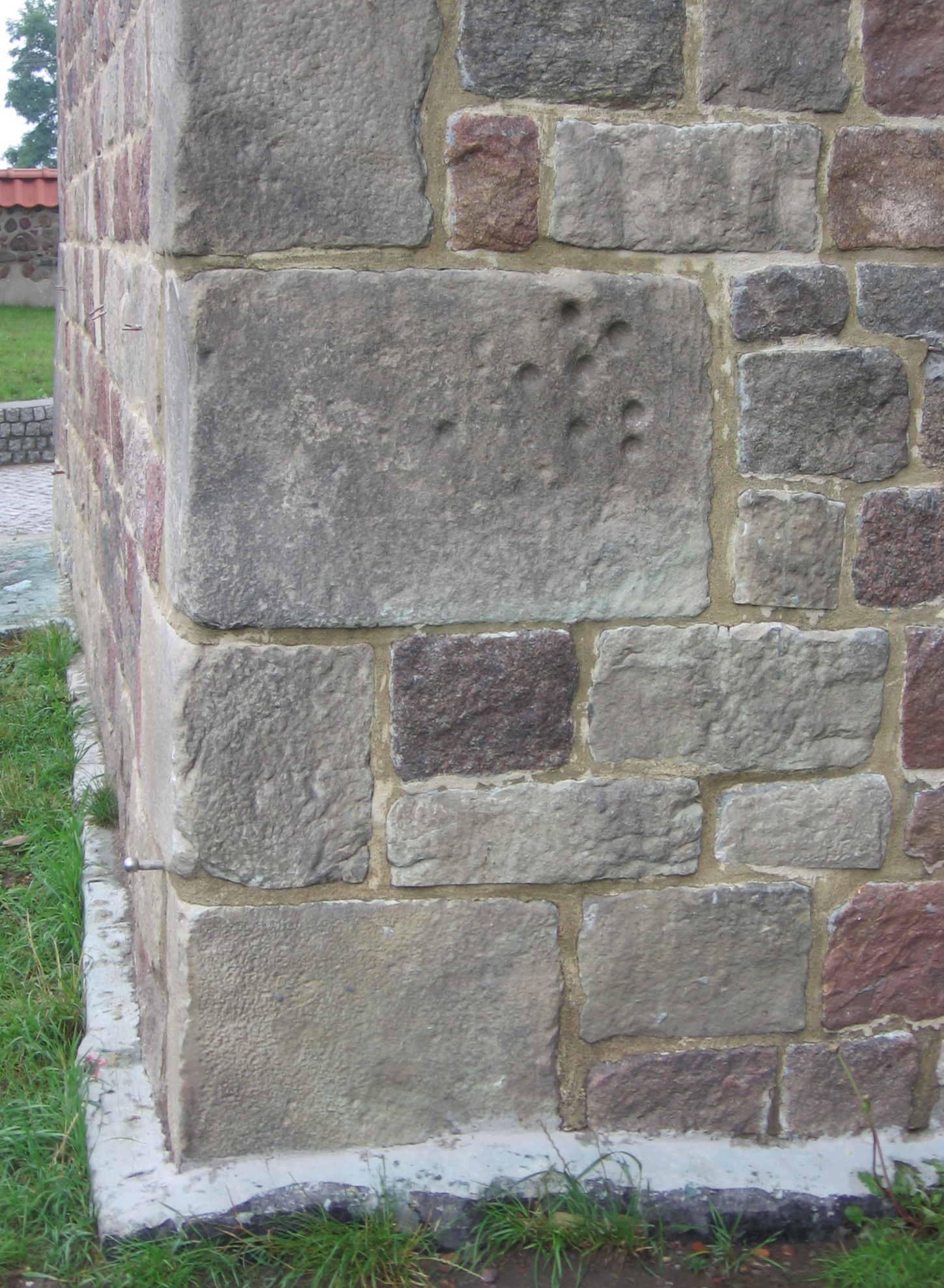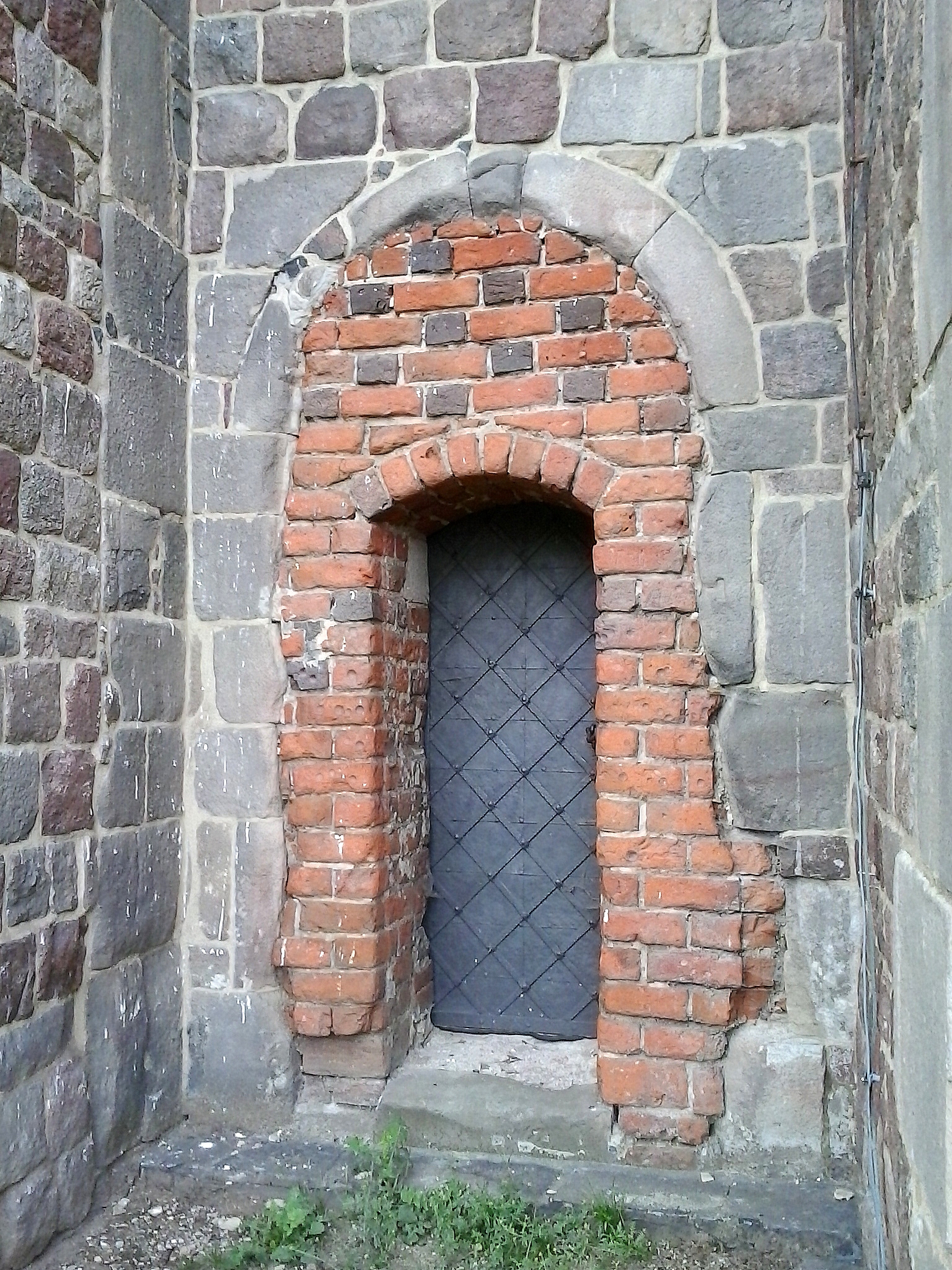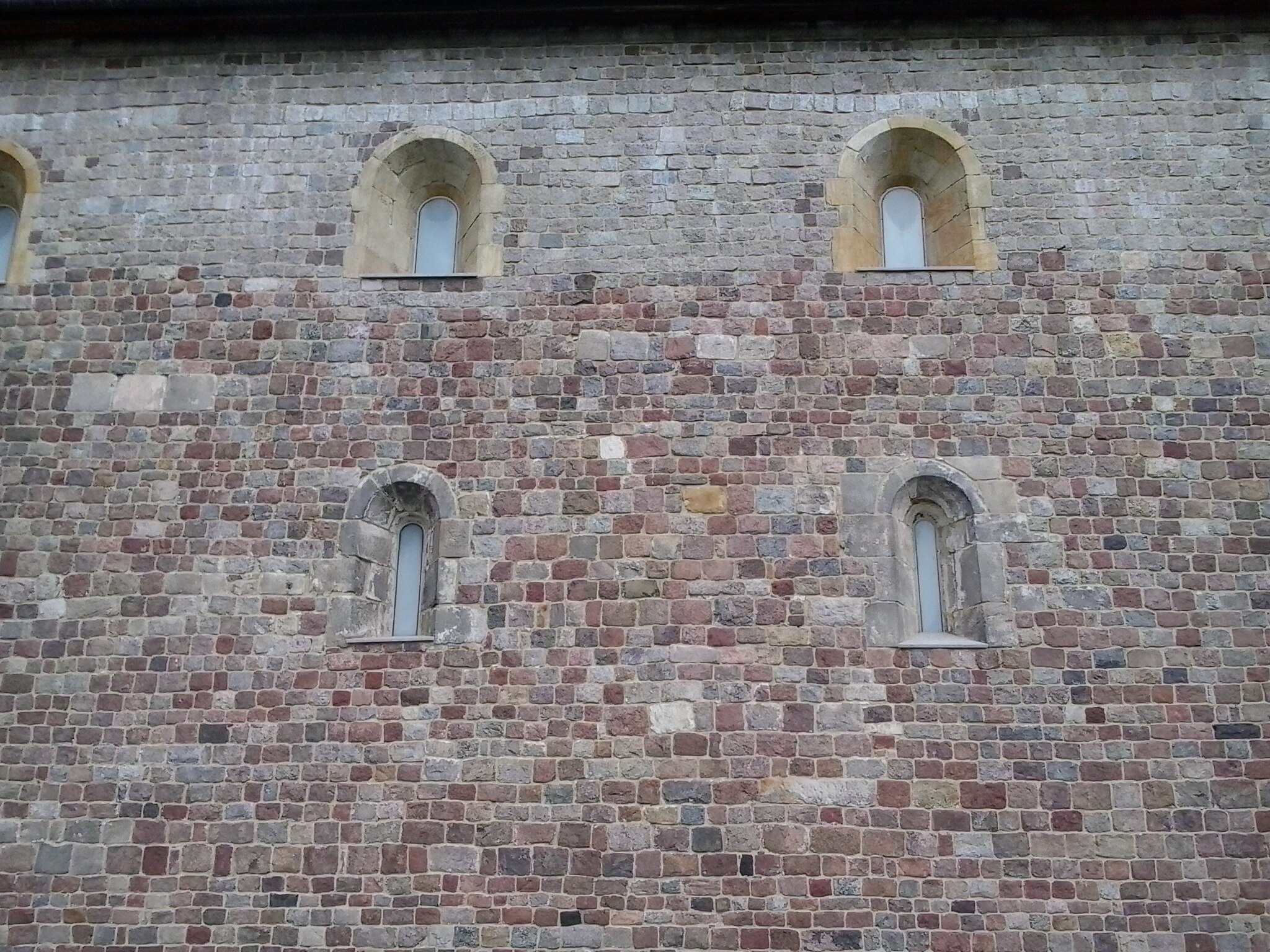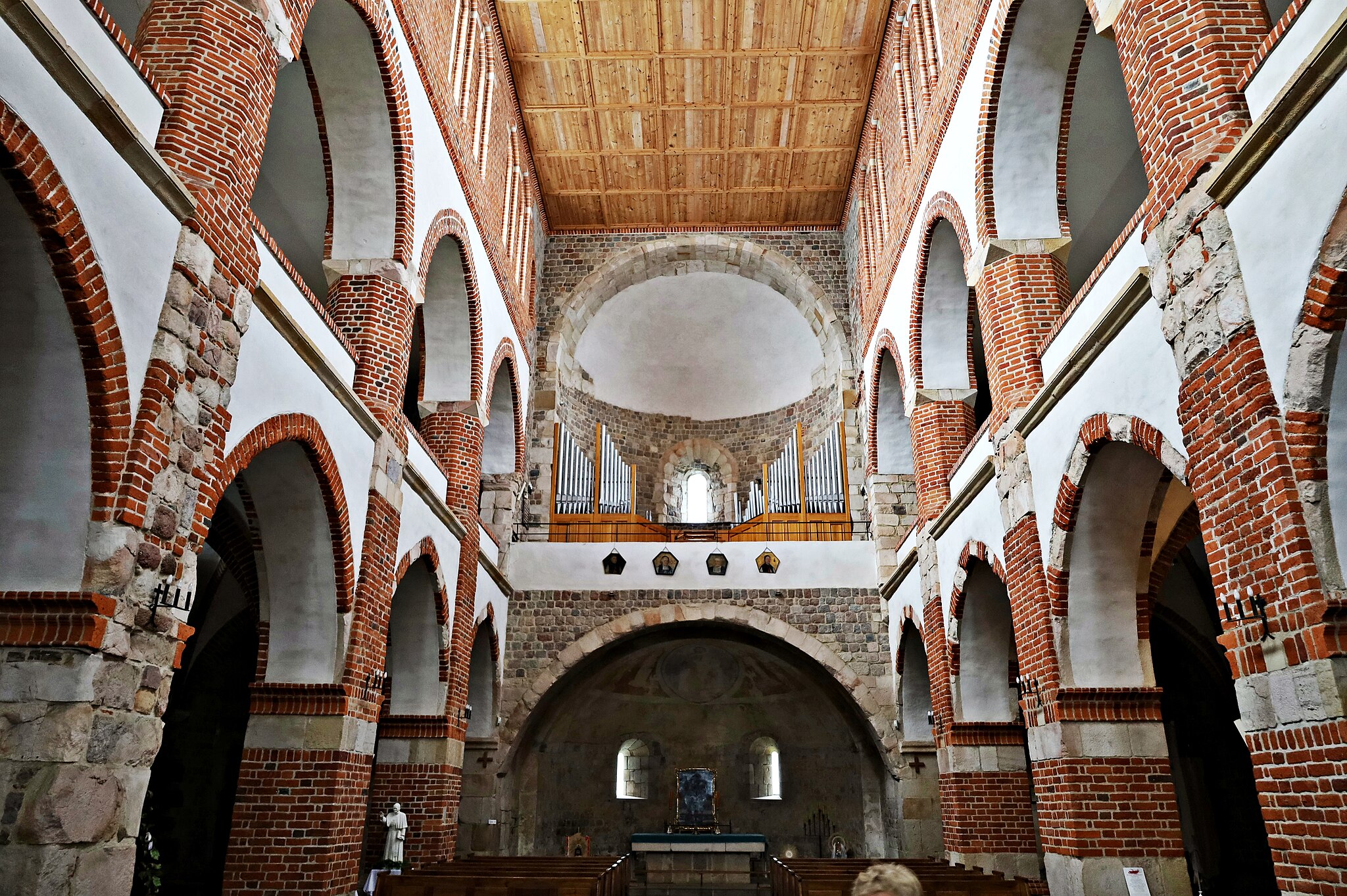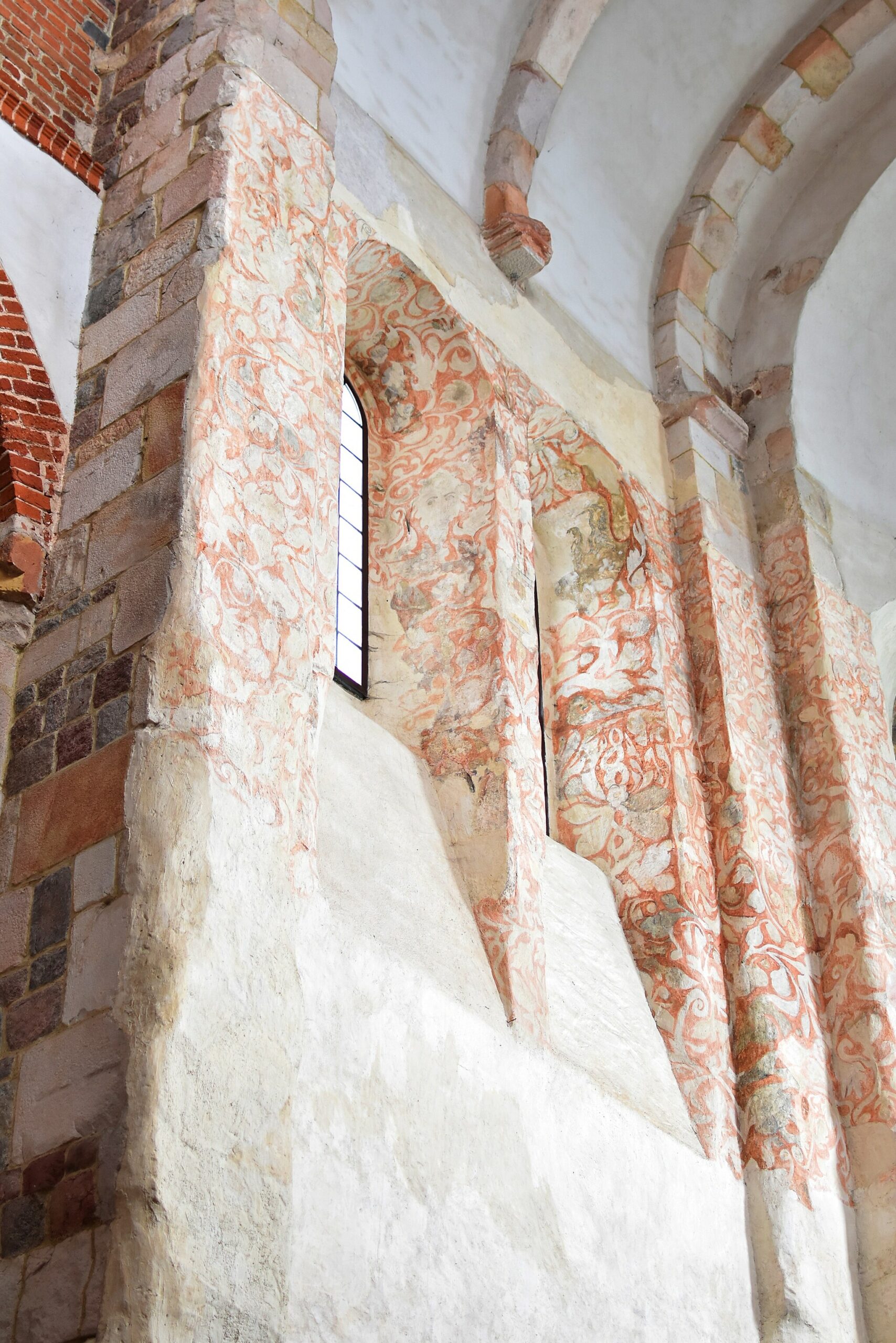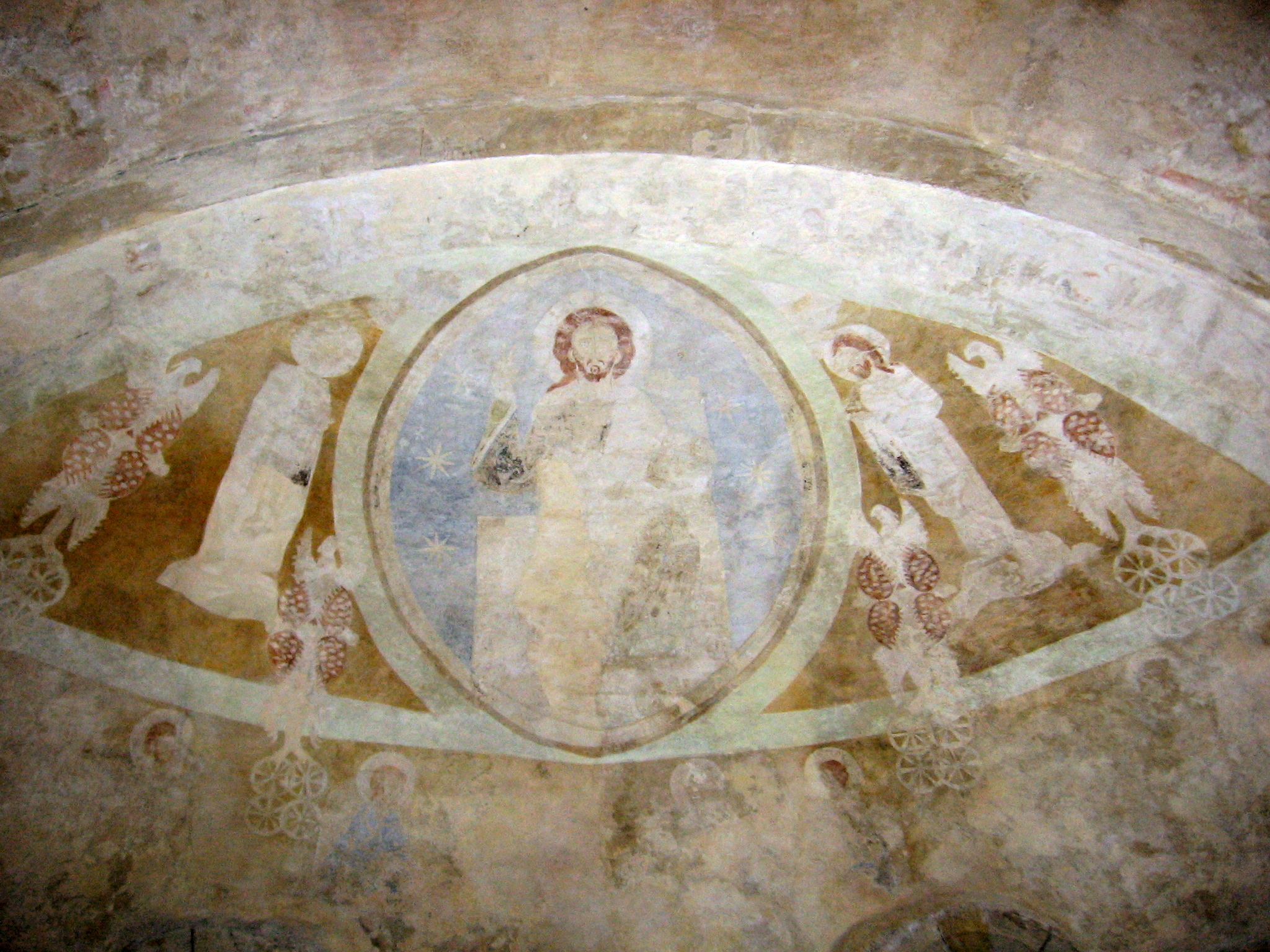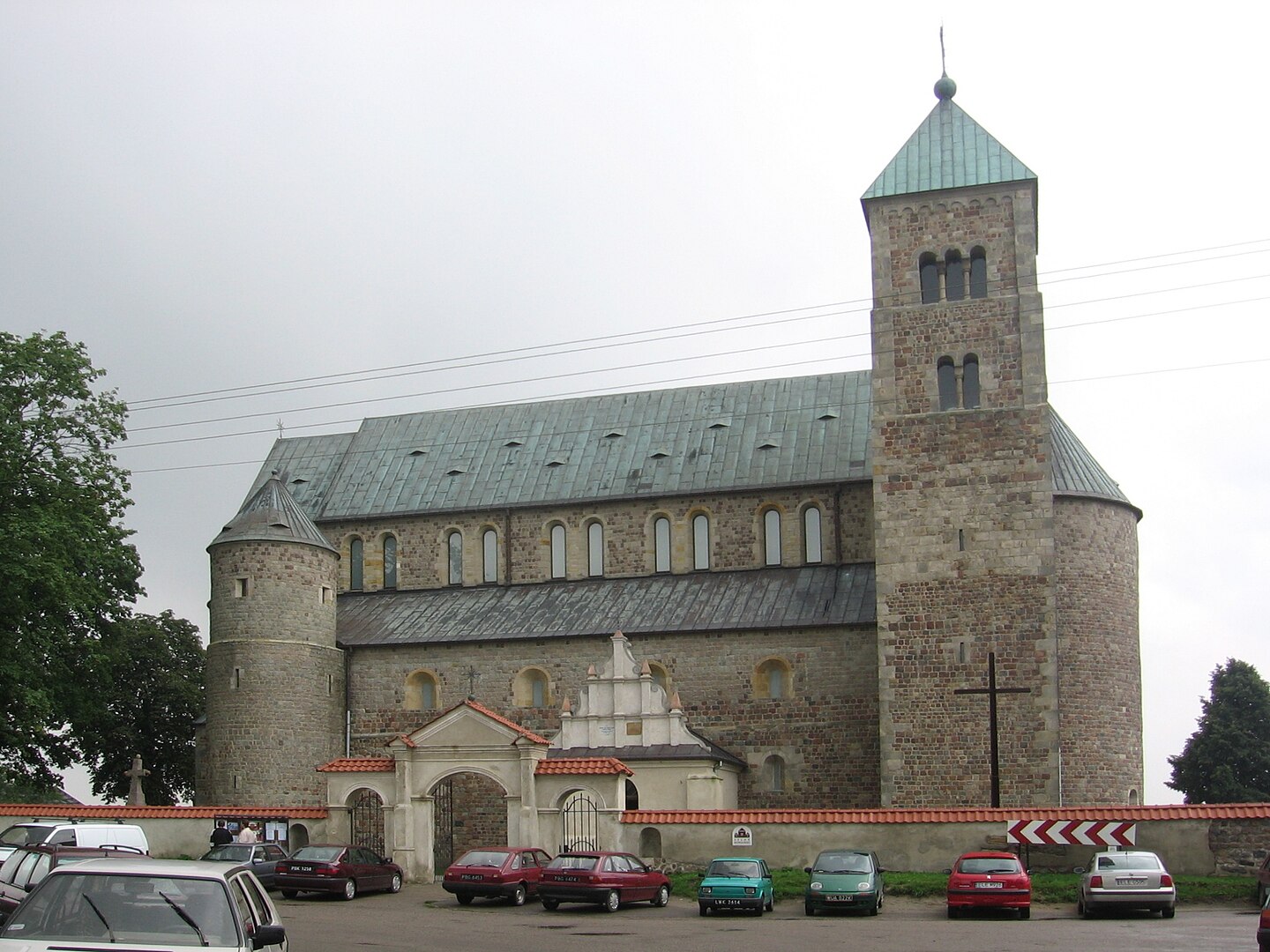The Archikolegiate Church of the Blessed Virgin Mary and St. Alexe at Tuma is a building that is featured in almost all historical and artistic studies. Its austere yet monumental mass has dominated the surrounding area for more than 700 years, and the surroundings have changed little since its construction. The church itself, however, has been subject to successive reconstructions, restorations and modernisations. The last major rebuilding was the reromanisation and regilding that lasted from the 1940s to the 1960s after the destruction of the last war
The exact date of the start of the Romanesque-style church is not known. The consecration of the church, possibly still unfinished, took place on 21 May 1161. The temple, built from granite, sandstone and fieldstone, in addition to its obvious religious function, could have served as a shelter for the surrounding population. In 1293, during a raid, the Lithuanians burnt down the collegiate church and the town of Łęczyca. Several years later, the area was invaded by the Teutonic Knights and the church remained in ruins for several decades
The archiclegiate church today. Photo: Mrksmlk, CC BY-SA 3.0, via Wikimedia Commons
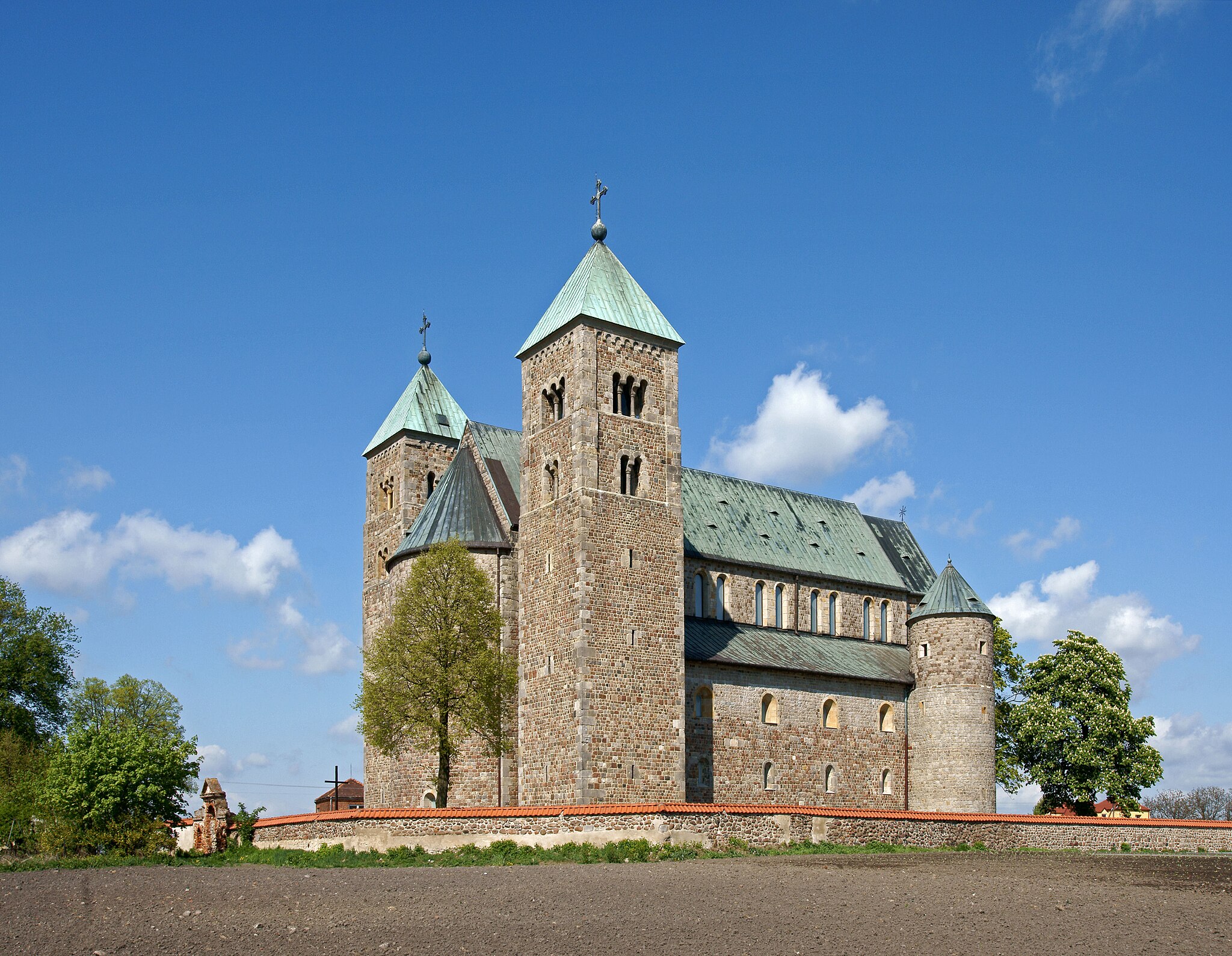
During the reconstruction, its previous Romanesque character was partially obliterated, giving the building Gothic features. In 1705, Łęczyca was invaded by the Swedes, who also destroyed the collegiate church. In the years 1765-1785 the church was rebuilt in the classicist style. The work was carried out by rebuilding the towers, the main nave, the western façade, the gables, as well as the windows and the interior. The towers were given classicist helmets. During the Battle of the Bzura River in September 1939, a German observer directing German artillery fire hid in the northern tower of the archdiocese. Polish artillery shelled the church effectively eliminating this observation point, but the tower was destroyed and a fire broke out in the church. After the temporary occupation of the Łęczyca area by the Polish Army, the archdiocese was bombed, causing further damage and another fire. All that remained of the collegiate church were the walls without a roof. The remains of the furnishings were covered by rubble and shrapnel from the roof tiles. In 1947, the rebuilding of the church began, led by Jan Witkiewicz Koszczyc on the recommendation of Jan Zachwatowicz. It was decided to rebuild it as a significant example of Romanesque architecture. Construction work continued for the next several years
The archiclegiate church in Tuma in 1920 and today. Source: Polska w krajobrazie i zabytkach Wydawnictwo dra Tadeusza Złotnickiego Warszawa 1930 i Mrksmlk, CC BY-SA 3.0, via Wikimedia Commons
The collegiate church in 1902 and today. Source: Society for the Care of Monuments of the Past and Andrew5006, CC BY-SA 3.0, via Wikimedia Commons
Archikolegiata in Tuma in 1938 and 1995 Source: Kolegiata w Tumie pod Łęczycą Michał Walicki Łódź 1938 and “Spotkania z Zabytkami” No. 3 (109) 1996
View of the altar and chancel before World War II and today. Source: Vladimir Pfeiffer, Public domain, via Wikimedia Commons and Gorofil, CC BY-SA 4.0, via Wikimedia Commons
View of the choir before World War II and today. Source: Vladimir Pfeiffer, Public domain, via Wikimedia Commons and Violik, CC BY-SA 3.0 EN, via Wikimedia Commons
The essence of the reconstruction concept was to restore the church to its original style, the Romanesque style. The ceiling above the nave was made of concrete. This solution stabilises the walls, preventing any collapse of the aged masonry. The new roof trusses were made of reinforced concrete, and the roof was covered with shingles and later with copper sheeting. Much of the exterior is a reconstruction and variation on the old appearance of the church. It gives the impression of a somewhat artificial, textbook picture rather than a historic building that has been in use for over 700 years. In 1952, work began on the interior of the church, removing the Baroque plasterwork and decorations, including the main altar and the epitaphs hung on the inter-nave pillars, thus destroying the centuries-old decoration. During the work, a well-preserved 12th-century Romanesque polychrome with Christ was found
On the 800th anniversary of the church’s first consecration in 1961, three of its altars were consecrated and the church was restored to function. Restoration of the interior continued over the following years. In 1993, the Łęczyce chapter was erected again. It was also at this time that the next stage of the church’s reconstruction began. Comprehensive restoration work was carried out again in 1995-2008
Despite much damage and a turbulent history, the arch-colegiate church is today one of the most magnificent monuments from the beginnings of the Polish state and one of the oldest Romanesque churches in the country
Source: odbudowarekonstruktionapogania.wordpress.com
Read also: Architecture | Renovation | Monument | History | Sacred architecture | Interesting facts


